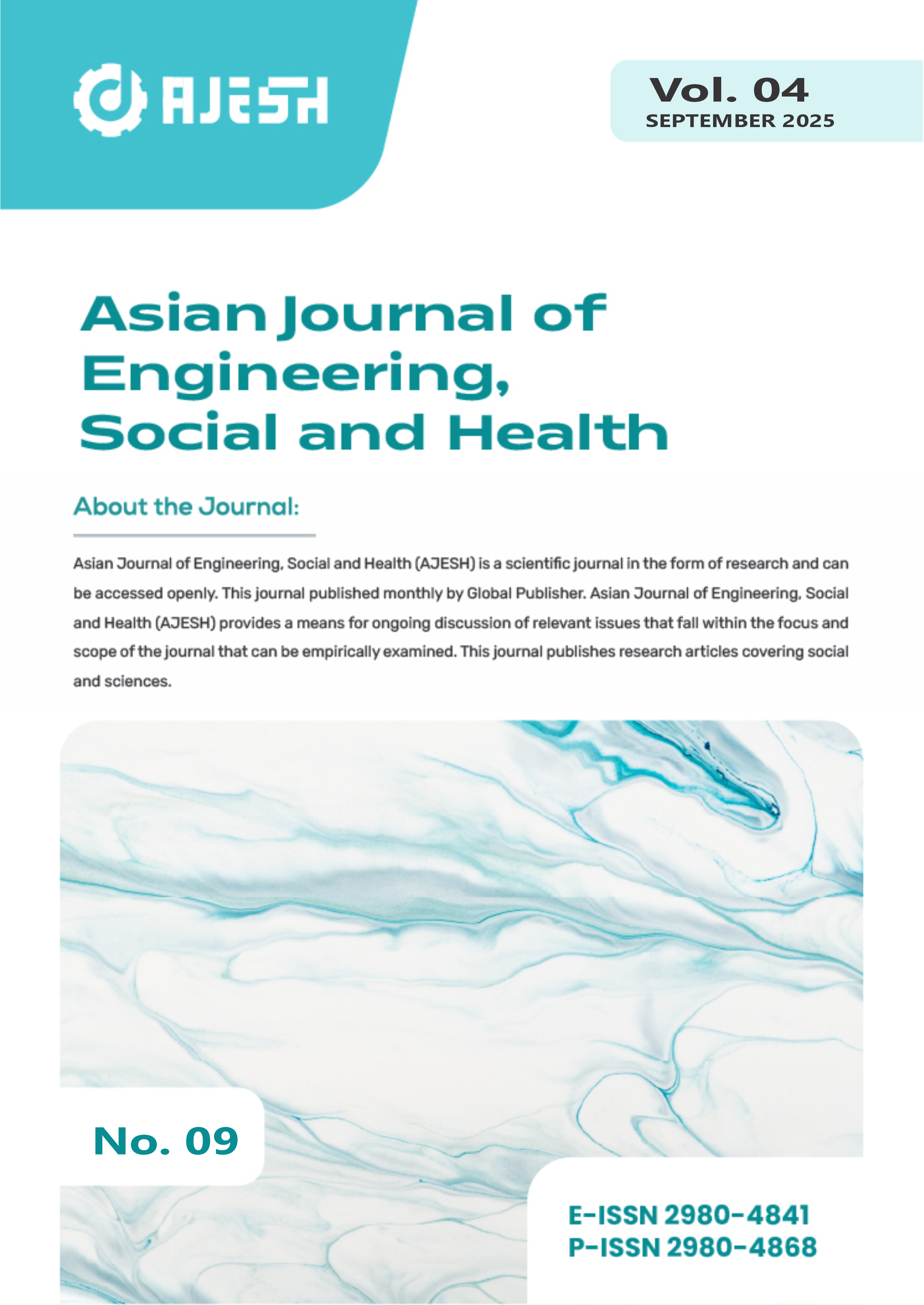Numerical Study Of Ammonia And Coal Co-Firing Using Combustion Model In Drop Tube Furnace
DOI:
https://doi.org/10.46799/ajesh.v4i9.661Keywords:
ammonia, coal, co-firing, CFD simulation, combustion, emissions, NOx, CO? reductionAbstract
This study presents a numerical investigation of coal and ammonia (NH?) co-firing using Computational Fluid Dynamics (CFD) within a Drop Tube Furnace (DTF). The objective is to evaluate the influence of ammonia blending on combustion characteristics and pollutant formation. Simulations were conducted at three mixing ratios—25%, 50%, and 75% ammonia based on calorific value—to assess their impact on temperature distribution and flue gas emissions, including CO?, CO, and NOx. The results indicate that increasing ammonia concentration significantly reduces peak combustion temperatures due to its lower heating value and the formation of water vapor, which absorbs a portion of the released thermal energy. CO? emissions decreased substantially with higher ammonia content, as ammonia contains no carbon. However, co-firing with higher ammonia ratios led to elevated levels of CO and NOx emissions, primarily due to incomplete combustion and the nitrogen content inherent in NH?. In particular, NOx emissions spiked at the 75% ammonia level, highlighting the need for effective mitigation strategies such as air staging, burner optimization, and post-combustion treatments. Overall, while ammonia shows promise as a carbon-free fuel alternative, careful combustion system design is crucial to ensure high thermal efficiency and regulatory compliance.
Downloads
Downloads
Published
Issue
Section
License
Copyright (c) 2025 Winandra Fajar Al Hakim, Prabowo Prabowo, Giri Nugroho

This work is licensed under a Creative Commons Attribution-ShareAlike 4.0 International License.
Authors who publish with this journal agree to the following terms:
- Authors retain copyright and grant the journal right of first publication with the work simultaneously licensed under a Creative Commons Attribution-ShareAlike 4.0 International. that allows others to share the work with an acknowledgement of the work's authorship and initial publication in this journal.
- Authors are able to enter into separate, additional contractual arrangements for the non-exclusive distribution of the journal's published version of the work (e.g., post it to an institutional repository or publish it in a book), with an acknowledgement of its initial publication in this journal.
- Authors are permitted and encouraged to post their work online (e.g., in institutional repositories or on their website) prior to and during the submission process, as it can lead to productive exchanges, as well as earlier and greater citation of published work.






